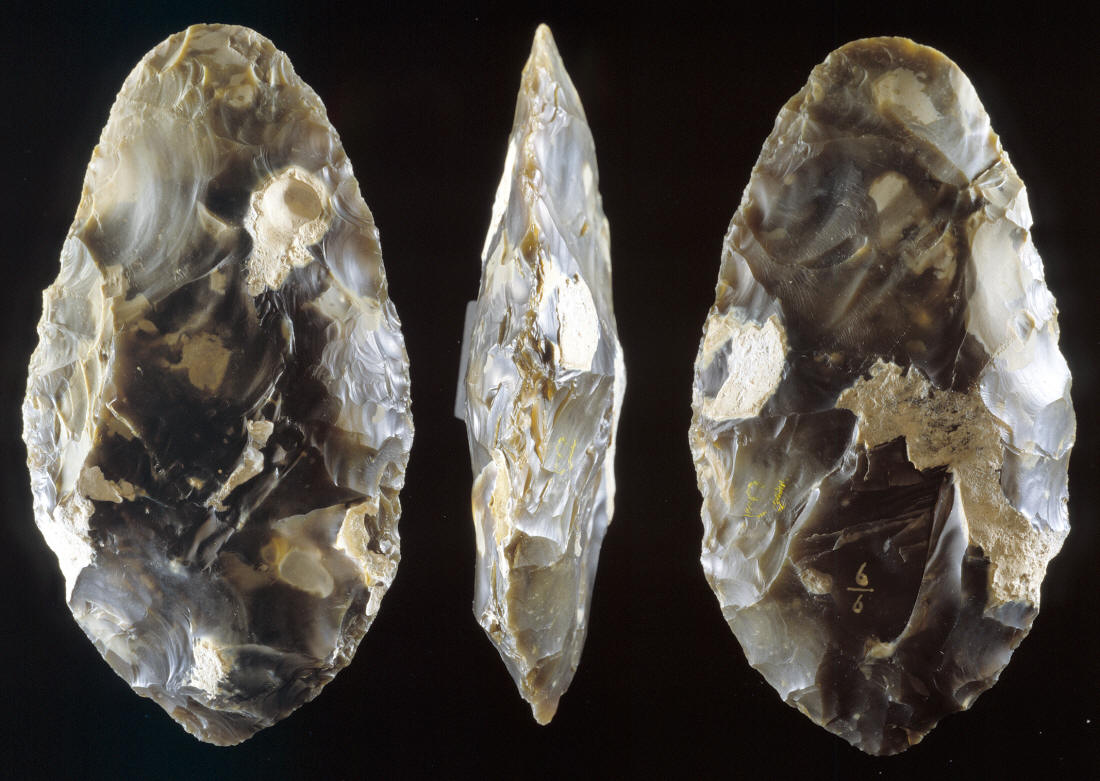|
HANDAXE
ACHEULEAN
ST. ACHEUL,
FRANCE
EST. 350,000 to 300,000 YEARS AGO
AMERICAN MUSEUM OF NATURAL
HISTORY COLLECTION
RETURN TO PAGE 2
COPYRIGHT MAY 31, 2008 PETER A. BOSTROM
This
handaxe was found in Acheulean deposits at the site of St. Acheul,
near Amiens in northern France. This site dates to the Middle
Pleistocene approximately 350,000 to 300,000 years ago.
Jim G. Shaffer, PhD. describes this handaxe as: "An extremely fine
example of an "almond" shaped biface. The large deep flake removal
scars found in the central areas on both sides, suggest that the
basic shaping was accomplished with a hard hammer. However, the
numerous small, shallow and elongated flake removal scars around the
perimeter of the artifact indicates extensive use of a soft-hammer
to thin, retouch and straighten out the edge. Several small and deep
flake removal scars located along the edges indicates extensive
utilization of the tool. The well defined shape, overall thinness
and relative straight edges reflect a high level of flint knapping
ability."
This handaxe is made of very high quality greenish black/gray
chert. It measures 6 7/8 inches (17.4 cm) long, 3 9/16 inches (9.1
cm) wide and 1 3/8 inches (3.5 cm) thick.
The St. Acheul site is the source of the name of the Acheulean
Tradition in Paleolithic studies. The site is located on the 30
meter terrace of the Somme River and it was excavated between 1903
and 1905. One particularly important aspect of this site is the very
high frequency of flake tools versus core tools such as bifaces.

|